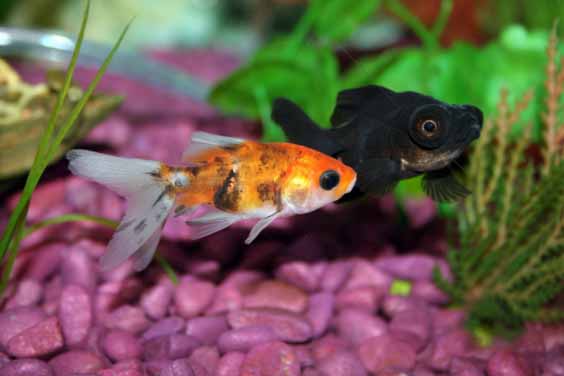
Source: Pixabay
Despite the ocean being rough with varying levels of water salinity and other external factors, fishes are delicate creatures. Having an aquarium may look good in your house, but for the fish inside to survive, you have to exercise caution on how you feed them and how you make the aquarium a habitable space.
Aquariums can either be Freshwater or Marine. They are basically fish tanks that try to mimic life under the sea; that is why you see miniature reefs with plants and rocks at the bottom. However, for an aquarium to support life, it wholly depends on filtration. The following are reasons why filtration is essential.
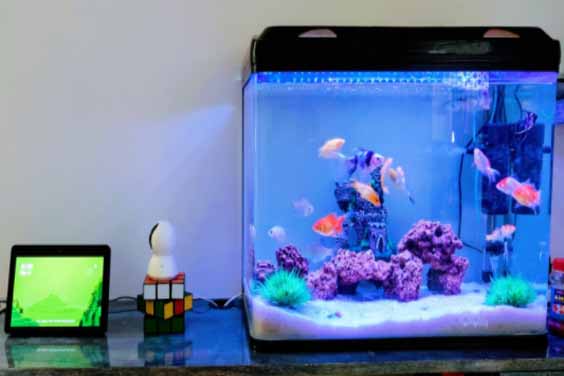
Source: Unsplash
The most important part of an aquarium is the filtration system. It handles three things vital to the survival of the inhabitants inside:
It cleans the water by getting rid of debris and their floating material that may cause problems to the fishes.
It removes the toxic build-up of ammonia excreted by the inhabitants of the aquarium.
It aerates the aquarium, providing the necessary oxygen, and getting rid of the carbon dioxide.
To be able to pull these off, an aquarium filter media relies on ceramic rings. These are unglazed pieces of fired ceramic with an outer part that has holes and spores and a central hole that plows through the entire structure. They are designed this way to allow water to push through all the holes to provide a home for beneficial nitrifying bacteria.
We are going to look more deeply into ceramic rings and how they fit into the whole aquarium.
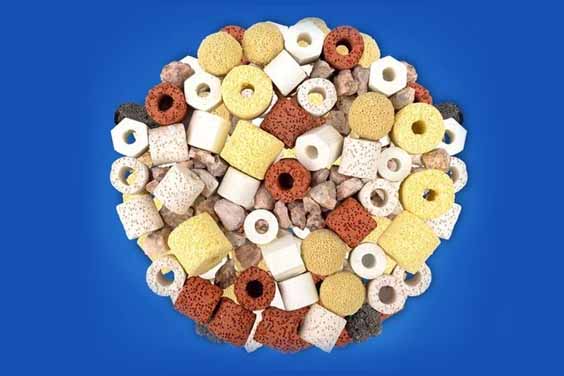
Source: Pinterest
The one distinction you need to understand about a ceramic filter ring is that they do not filter the water; they simply provide an abode for the beneficial bacteria that handle the filtering of the water. At the point of introducing ceramic rings into the water for the first time, they do not have any bacteria on them.
Ceramic rings have very tiny pores all over their surfaces, inside and out, some too small to be seen by the naked eye. These pores provide surfaces for nitrifying bacteria to build up. Nitrifying bacteria is a beneficial kind of bacteria that plays a huge role in making the aquarium habitable for fishes and any other kind of aquarium animal.
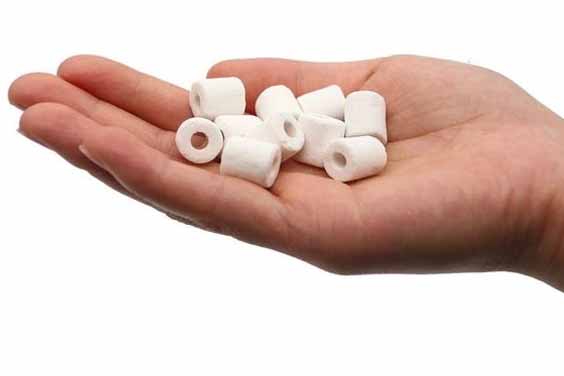
Source: Pinterest
The ocean has its own way of balancing the levels of oxygen and carbon dioxide in the water as well as getting rid of harmful toxins. However, when you transfer fish into an aquarium, you will also have to recreate those conditions for them. This is where a ceramic filter ring comes in.
Nitrites are harmful chemicals that naturally build up inside the aquarium. If the build-up is allowed to go unchecked, the fish and any other living creature inside there will eventually die off. The only way to get rid of these nitrites is through nitrifying bacteria, which need a surface for them to proliferate. These surfaces are provided by the ceramic rings.
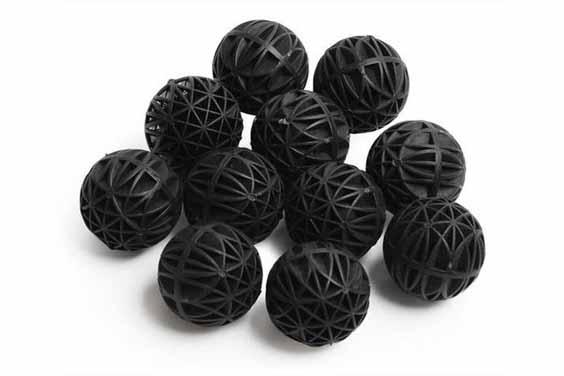
Source: Pinterest
A common question that keeps popping up every now and then among aquarium enthusiasts is one that pits bio balls against ceramic rings. The answer is never black and white because the two are designed to excite their duties differently.
There are two types of bacterias that are of great focus in an aquarium; Nitrifying and Denitrifying Bacteria. Nitrifying bacteria eat Ammonia and Nitrates and are found on the surface of the aquarium. Denitrifying bacteria simply deal with Nitrates alone.
Bio balls can only accommodate denitrifying bacteria, which means a ceramic filter ring does one thing extra, get rid of ammonia too. This gives ceramic rings the edge. However, this is not a question of who can do more.
What makes bio balls a preferred choice by over half of the aquarium keepers is that, although it only handles one type of toxin, it does the work really really well. In short, it is highly specialized in getting rid of nitrates more efficiently.
Aside from differences in their physical attributes, there is another functional difference between the two. Ceramic rings increase their surface over time, and in the end, they become clogged much faster, which reduces their effectiveness. Bio balls, on the other hand, take time and do not require as much maintenance as ceramic needs.
The bottom line is each of these options is good at what they do; it all comes down to what you prefer. Either way, your pet fish will be safe, no matter the choice you make.
Ceramic rings can be put into the aquarium in many ways. Most aquarium filter media kits come equipped with ceramic rings inside, all you would need to do is drop them into the aquarium, and they will settle at the bottom. Some aquariums have a special compartment on the side for housing the rings. Either way, the job will get done as long as the rings are in contact with the water.
When you get the ceramic rings for the first time, you will need to rinse them using dechlorinated water to remove dust that is produced when the rings crash into each other in the bag. They have to go into the water clean.
The ceramic rings have to be able to sit after a mechanical filtration process so that by the time the water goes through the aquarium filter media it has gone through mechanical filtration that will be able to catch the larger debris like dead leaves, fish poop, or uneaten food. Without this, the ceramic rings will gunk up instead.
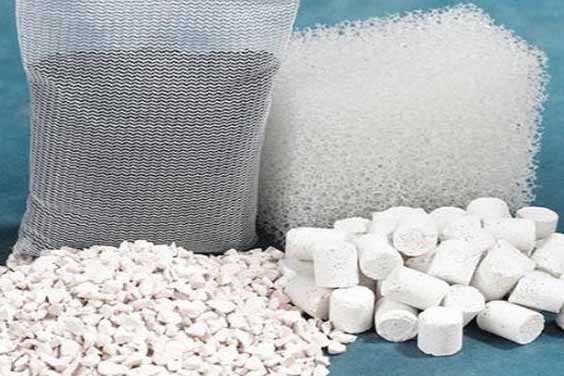
Source: Pinterest
There is no definite number of rings that one should place into their aquarium. Since they do not do any harm to the fish inside, you can put as many as you can fit. However, The size of the aquarium should help you gauge the right amount of rings to use. For starters, leaving as much room as possible for the fish to move about is important. So have that in mind when placing rings inside.
The bigger the aquarium, the more the number of ceramic rings required and vice versa. The bottom line is that there is no limit to how many you can throw in. Use your own discretion.
The biggest threat to an aquarium is dirt. You may not notice it as fast as you should, and by the time you finally do, it may be too late for your fish. Therefore, cleaning ceramic rings is a necessity.
As water passes through the ceramic rings, with time, they will start to clog up as waste, and other debris gets trapped in the holes. This is not healthy for the aquarium. For the beneficial bacteria to be able to nest in the rings, water has to be able to pass through the main holes constantly. Once a ring is clogged up, then the chain effect that is triggered can turn catastrophic for your fish.
Cleaning a ceramic filter ring is not hard, fortunately. Simply put, all the ceramic rings into a small bucket and add dechlorinated water. Start by swirling the water around gently to shake off the clogged debris inside the ring holes.
However, keep in mind that the aim of this exercise is to get rid of the visible debris, not scrubbing the rings clean. They may not look white like they used to because that is the effect of the beneficial bacteria. Scrubbing the rings clean will get rid of the bacteria, and that will not be helpful at all.
Killing the beneficial bacteria will force you to cycle your aquarium again, and that is a lot of work and another unneeded expense. Once it reaches a point where you cannot clean the rings anymore, then consider replacing them.
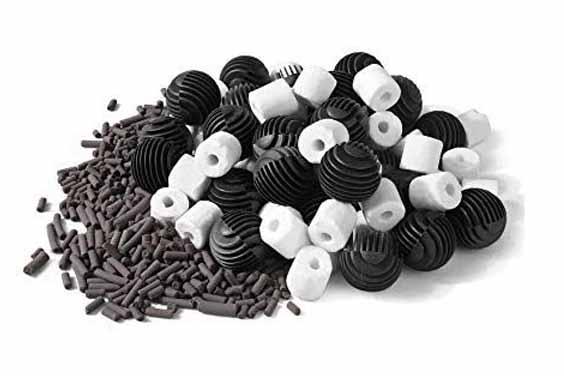
Source: Pinterest
The frequency of replacing your aquarium filter media depends on many factors like the type of manufacturer and how regularly you clean them. Some ceramic rings manufacturers recommend replacing the rings after six months, while others like Marineland claim that their rings should not be replaced.
Water is the only thing that makes the earrings wear out as it passes through the holes; the time it takes to wear them down varies from manufacturer to manufacturer. The decision to replace them is in your purview. You can be able to tell if the set of ceramic rings in the tank are worn out far too much.
The ceramics rubbing against each other causes the surfaces to smooth. This reduces the foothold for the bacteria to latch on. Once you see the ceramic filter ring smoothening out, then that’s your cue to replace them. Most times, ceramic rings can last for years without any issues.
Ceramic rings are not the only materials that can be used to culture beneficial bacteria or trap debris in the aquarium. There are countless other alternatives you can use in their stead, and they include the following.
As already mentioned above, bio balls serve an almost similar function to ceramic rings, but they go about in a different way. They are shaped like balls and have sunken spaces crafted into them to create room for nitrifying bacteria to latch on.
Bio balls are made out of plastic and work best in larger tanks, ponds, and refugium. They are a cheaper alternative to a ceramic filter ring. Some bio balls have a piece of foam inside with perforations on the outer ball to provide more surface area for the bacteria to proliferate.
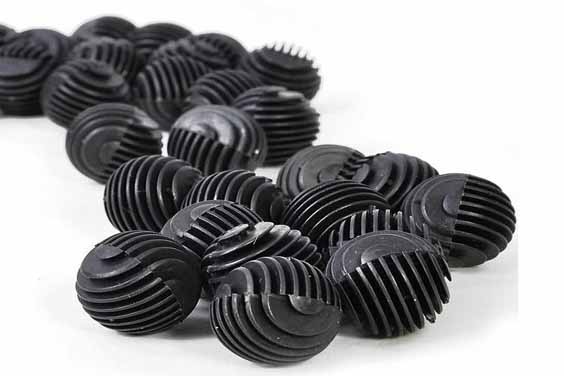
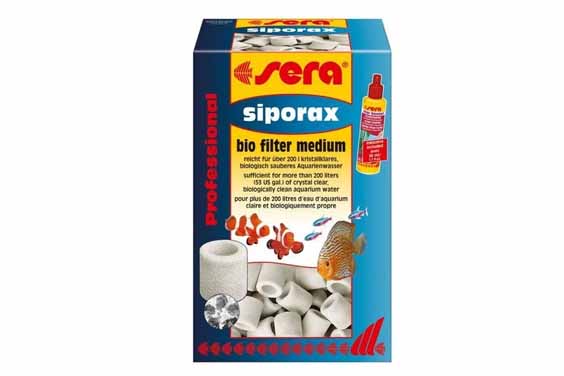
Sera siporax looks almost similar to ceramic rings in both appearance and functions. However, instead of plastic, they are fashioned out of sintered glass. Sintered glass is made when small fractures of gas are heated then exposed to high pressure that compacts it together.
Sera siporax also plays host to another type of bacteria, anaerobic bacteria. Based on the material used to create them, sera siporax lasts much longer than ceramic rings because it wears down slower.
Lava rock is a good option to go for when you have a marine aquarium, one with saltwater from the sea. There are many types of lava rock, and getting them is not very hard. You could collect them from the sea itself if you can or simply purchase them from your aquarium store in your locale.
Lava rocks also add an aesthetic touch to the whole setup. However, care has to be taken because fish sometimes have their fins scrapped and snagged when they move past the rocks. Do not use ones that have very sharp outcrops.
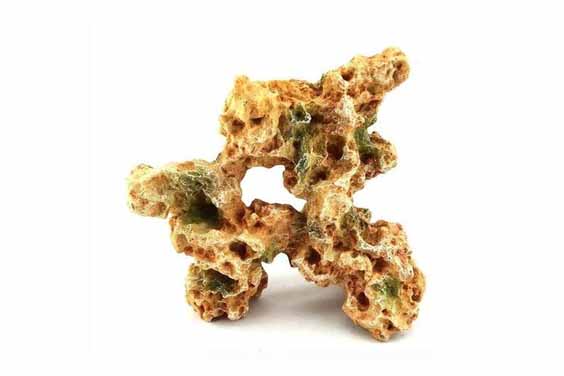

Natural substrates is a blanket world for all the tiny rocks and gravel that are found in most aquariums. The main function of most is to make the aquarium look good and mimic the same conditions that a fish would expect to see in a seabed.
These pebbles and gravel also serve another important function; they provide the surface for beneficial bacteria to grow, just like a ceramic filter ring. They also provide anchorage for water plants that may sprout, which is good for the fish.
As we look into the beneficial things that enhance the conditions of your aquarium, it is easy for people to get caught in the moment and begin throwing anything into the tank. This is not recommended. As earlier mentioned, fishes are very delicate, and any slight change in the water surrounding them can impact them negatively and even kill them. Therefore, the following are some of the things that have no business inside an aquarium.
You may be tempted to throw in a plastic mold of Nemo into your fish tank to provide company for your goldfish Jessica. As much as Jessica may appreciate running circles around Nemo, plastic is dangerous. When plastic stays too long in water it starts releasing toxic chemicals into the water and this could kill your fish.
There are plastics that are graded safe for fish tanks but the general consensus is that if you can avoid them totally the better it is for the inhabitants of the aquarium. Plastic chips especially are very dangerous as they could be ingested by the fish, causing health problems or even check them on the spot.
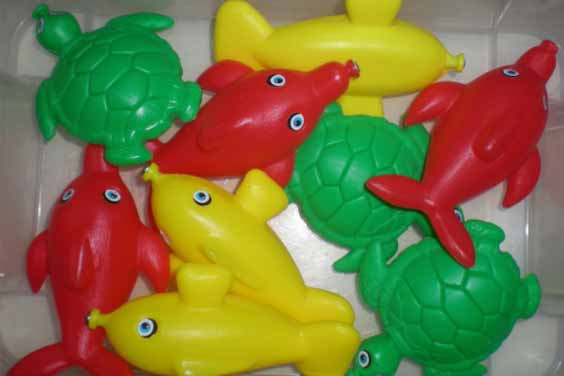

The wood you see inside the aquariums in shops is treated wood. Do not make the uninformed decision to throw a normal piece of wood into the tank as you would be introducing a lot harmful organisms into such a closed space.
Untreated wood will do more than just unleash harmful bacteria into the water, it will change the chemistry of the water, causing the PH levels to go berserk. If you feel like you must add a piece of wood inside the tank then make sure it is treated and it is hardwood. Hardwood takes longer to rot and does not chip easily.
When purchasing an aquarium, you have to be aware that there are two types of fish. Freshwater and Seawater fish. They are not the same and each is adapted to their specific ecosystem. Things like shells, corals, and beach sand can work for an aquarium with ocean fish, the same cannot be said for freshwater fish.
The thing about ocean water is that it is constantly renewing itself, a factor that explains why there is life inside oceans. The same cannot be replicated in a fish tank as it is too small. Introducing any type of ocean chemicals may hurt the fish in the long run.


An aquarium is not your backup sink. Do not go around interesting your hands into the water because there are so many things that can go wrong with that. There are about 2-10 million bacteria on our fingertips alone, dipping them into the aquarium only spreads them into the water and they may be harmful to the fish.
Inserting hands that have been washed with soap is also another problem as that will alter the water’s PH, affecting the fish. Do not dip your hands into the aquarium.
Shards of glass, blades, pointed objects, and anything that can rip a fish into pieces should not find its way into the aquarium. Aquarium fish move around alot and since the space is already small, they tend to go into any small crevice they see. Brushing against sharp objects may tear their skin and expose them to infections. Sharp objects, even rocks with jutted protrusions, should never find their way into an aquarium.
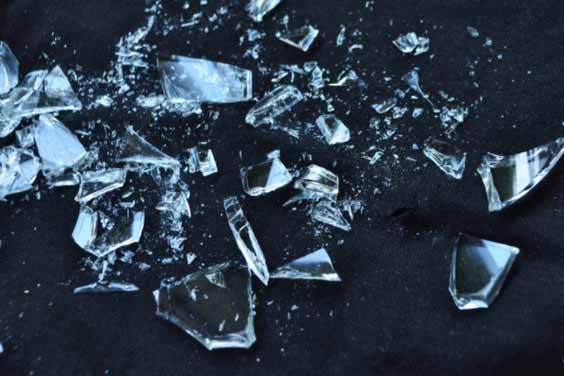

As hilarious as it may sound, there are people who have taken home a fish only to wake up some months later to find a giant squeezed inside the aquarium. There is a good reason why the fish species suitable for home aquariums are the small type. They eat less and will never outgrow the tank.
Buying the wrong fish will end up with the fish dying and you losing your money. Always consult first before buying any fish for your aquarium.
An aquarium does not self-clean like the ocean, for the fish or any other animal to survive inside there, the tank has to be cleaned regularly. A clean aquarium ceramic ring makes it hard for the fish to be sick or meet an untimely death due to encountering toxic debits. The following are simple ways that you can use to keep your fish tank clean at all times.
Regular water change: In the first two months, it is recommended that you cycle 25% of the water in the aquarium. After the first two months, switch to changing the water completely every two weeks to avoid the build-up of toxins.
Avoid Overcrowding: To determine the right number of fish one aquarium can accommodate, make sure that the total length of all the fish added together does not go past 20cm. Overcrowding the tank leads to more waste being produced and this is not healthy.
Amount of food: Many people are not aware that too much food can kill the fish. You have to exercise caution when feeding the fish and limit the affair to a couple of flakes once a day. Too much food will end up contaminating the water once they start rotting.
Algae and dirt: For dirt, make it a regular habit to wipe the walls of the fish tank while wearing the right gloves. Use an acrylic friendly pad with no soap or any cleaning agent. When dealing with algae, use algae prevention liquids that are not harmful to the fish. Some algae can also be rid of naturally by introducing other animals like snails and shrimps.
The filter: Remove the filter sponge once every month and rinse it properly. A dirty aquarium filter media will stop the water from flowing through it as it should.
Use activated carbon: Activated carbon is an effective porous material that can absorb huge amounts of dissolved contaminants from the water. Contaminants like chlorine, tannins, chloramines can be safely absorbed by activated carbon to make the water clear and odorless. Replace the carbon every month.
Keep It Far from Windows: Keeping the aquarium next to a window is not a good idea since dust and other contaminants may settle into the aquarium and could harm the fish. F the windows have to be open then ensure there is a curtain to block anything going in.
Taking care of an aquarium is not an easy job. Unlike most pets, fish require constant monitoring as they are being forced to adapt to an environment that does not favor them too much. If you are looking for an aquarium for your home then get in touch with the best aquarium manufacturers. You will not only get access to great products and amazing discounts, but qualified experts will be at your beck and call to answer all the questions you may have. What’s more? You can even get an aquarium customized to your taste and have it shipped straight to your house.




Leave a Reply